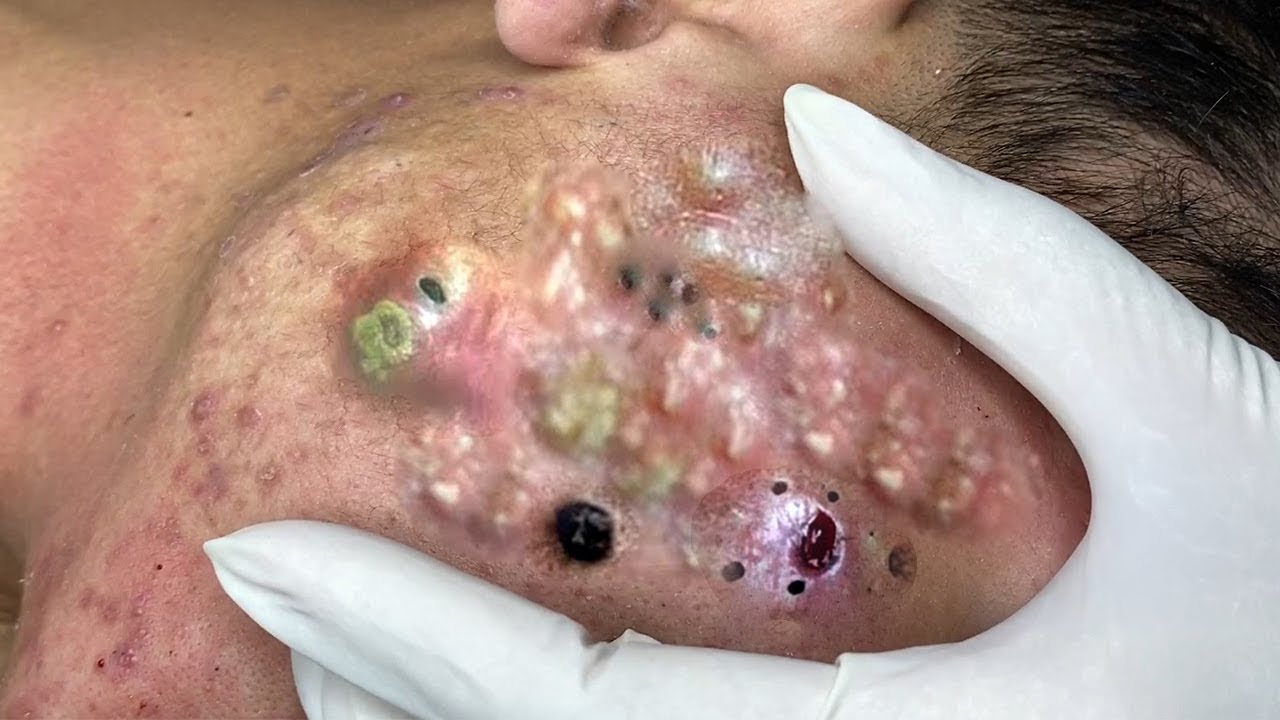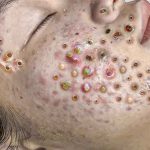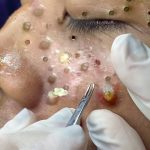Blackhead removal
Please scroll down to watch the video.👇👇
Blackhead removal can be done safely and effectively at home or professionally. Here’s a breakdown of methods:
🧼 At-Home Blackhead Removal
1. Cleanse Your Skin
-
Use a gentle salicylic acid cleanser to unclog pores.
-
Wash your face twice daily to prevent buildup.
2. Steam Your Face
-
Lean over a bowl of hot water for 5–10 minutes (towel over your head to trap steam).
-
This opens up your pores, making extraction easier.
3. Exfoliate Gently
-
Use a chemical exfoliant (like BHA or AHA) 2–3 times a week.
-
Avoid harsh scrubs which can irritate and worsen blackheads.
4. Extraction (Use Tools Carefully)
-
Comedone extractor tool: After steaming, gently press around the blackhead.
-
Fingers wrapped in tissue: Apply gentle pressure (don’t force it).
-
Disinfect skin and tools before and after.
5. Pore Strips (Occasional Use)
-
Can pull out blackheads from the nose or chin, but may irritate sensitive skin.
6. Use Retinoids (Nighttime)
-
Over-the-counter retinol or prescription tretinoin helps prevent clogged pores.
🚫 Avoid
-
Popping or squeezing blackheads with dirty hands.
-
Over-cleansing or over-exfoliating.
-
Using oil-heavy products that clog pores.
💆♀️ Professional Treatments
-
Facials with extractions.
-
Chemical peels to dissolve buildup.
-
Microdermabrasion or HydraFacial.
-
Dermatologist for stubborn or cystic acne.
Would you like product suggestions or a simple routine based on your skin type?
Removing blackheads effectively and safely involves a combination of proper skincare practices, the use of specific topical treatments, and, in some cases, professional procedures. Here’s a detailed guide based on dermatological advice and reputable sources:
🧼 At-Home Blackhead Removal
1. Cleanse with Salicylic Acid
Salicylic acid, a beta hydroxy acid (BHA), is oil-soluble, allowing it to penetrate deep into pores to dissolve debris and unclog them. Using a cleanser with 0.5% to 2% salicylic acid once or twice daily can help reduce blackheads.
2. Incorporate Retinoids
Topical retinoids, such as adapalene or tretinoin, promote cell turnover and prevent the formation of comedones (clogged pores). They are effective in both treating existing blackheads and preventing new ones.
3. Use Alpha Hydroxy Acids (AHAs)
AHAs like glycolic acid and lactic acid exfoliate the skin’s surface, removing dead skin cells that can clog pores. Products containing 5% to 10% AHAs can be used a few times a week, depending on skin tolerance.
4. Apply Clay Masks
Clay masks, particularly those containing kaolin or bentonite, can absorb excess oil and help draw out impurities from pores. Using a clay mask once or twice a week can complement your skincare routine.
5. Avoid Manual Extraction at Home
While it might be tempting to squeeze blackheads, doing so can lead to skin damage, scarring, or infection. If you choose to use extraction tools, ensure they are sterilized, and proceed with caution. However, it’s generally recommended to seek professional assistance for extractions.
💆♀️ Professional Treatments
1. Comedo Extraction
Dermatologists and licensed estheticians can perform comedo extractions using specialized tools to safely remove blackheads without damaging the skin.
2. Chemical Peels
Professional chemical peels using agents like salicylic acid, glycolic acid, or retinoic acid can exfoliate the skin deeply, helping to clear blackheads and improve skin texture.
3. Microdermabrasion and Hydrafacial
These treatments exfoliate the skin and can help remove blackheads. Hydrafacial, in particular, combines cleansing, exfoliation, extraction, and hydration, making it effective for blackhead removal.
4. Laser and Light Therapies
For persistent cases, dermatologists might recommend laser or light-based treatments to reduce oil production and eliminate blackheads. However, these are typically reserved for more severe or resistant cases.
🚫 Practices to Avoid
-
Over-Exfoliation: Excessive exfoliation can irritate the skin and exacerbate blackheads. Limit exfoliating products to a few times per week based on your skin’s tolerance.
-
Pore Strips: While they can remove surface debris, pore strips may not address the root cause of blackheads and can irritate the skin.
-
Heavy or Comedogenic Products: Avoid skincare and makeup products that are heavy or labeled as comedogenic, as they can clog pores and contribute to blackhead formation.
🛡️ Prevention Tips
-
Consistent Skincare Routine: Maintain a regular cleansing routine, especially after sweating, to prevent pore-clogging.
-
Non-Comedogenic Products: Choose skincare and makeup products labeled as non-comedogenic to reduce the risk of clogged pores.
-
Regular Pillowcase Washing: Wash pillowcases and bedding regularly to remove oil and bacteria that can transfer to your skin.
-
Avoid Touching Your Face: Keep your hands away from your face to prevent the transfer of oils and bacteria.


